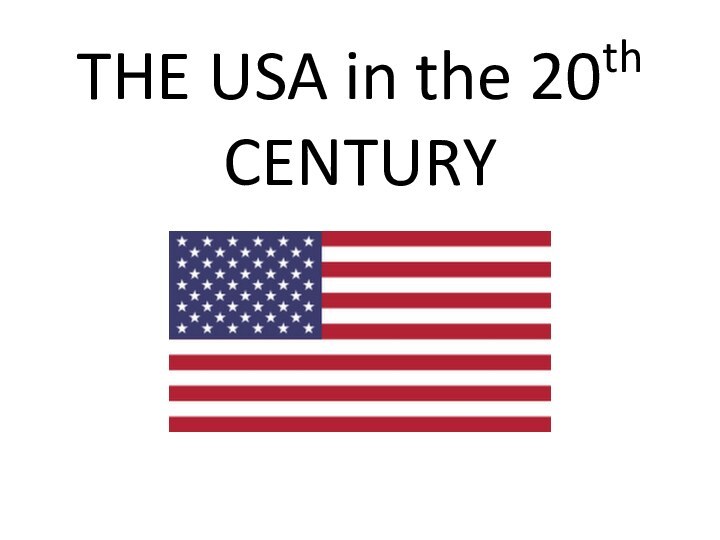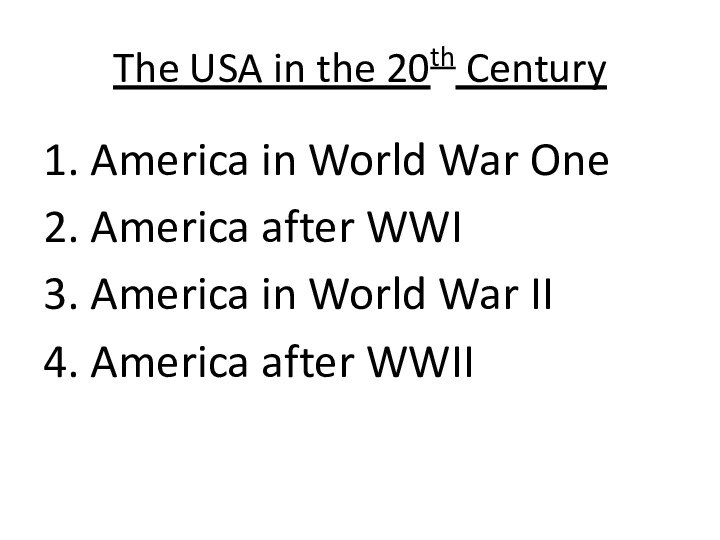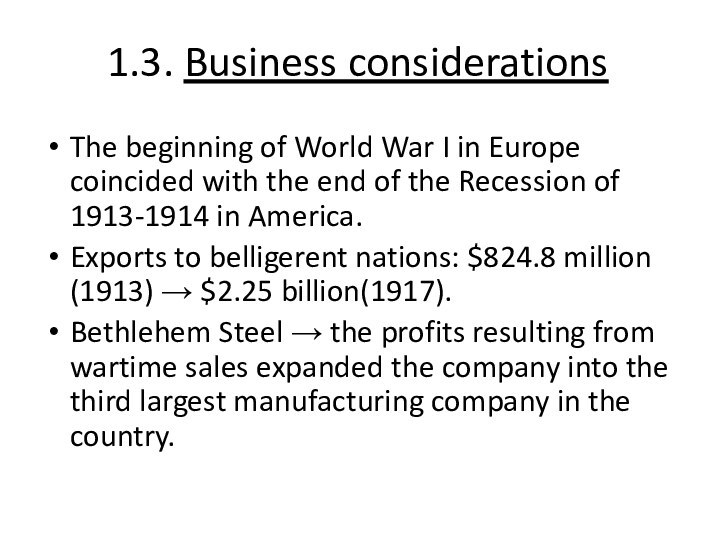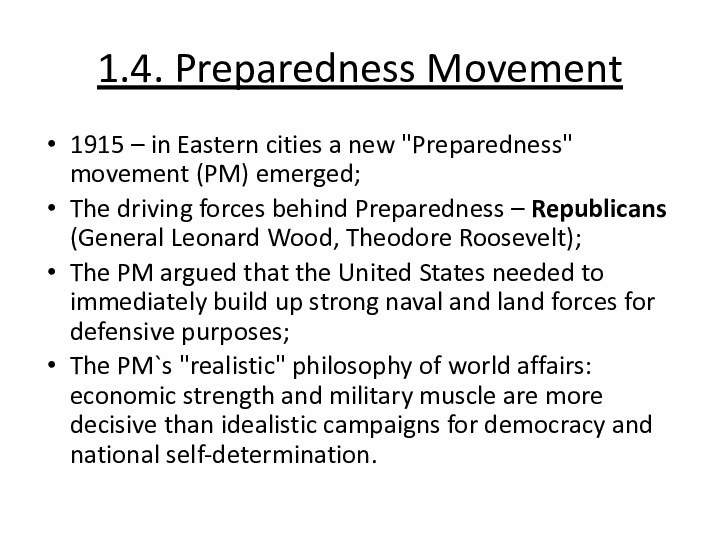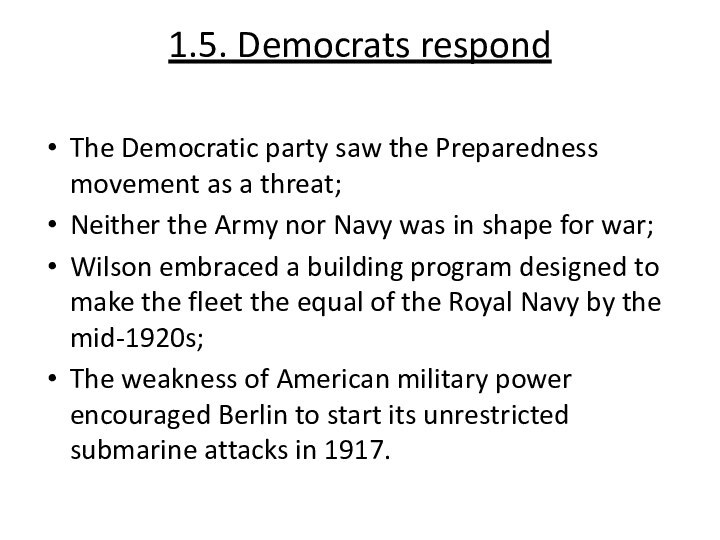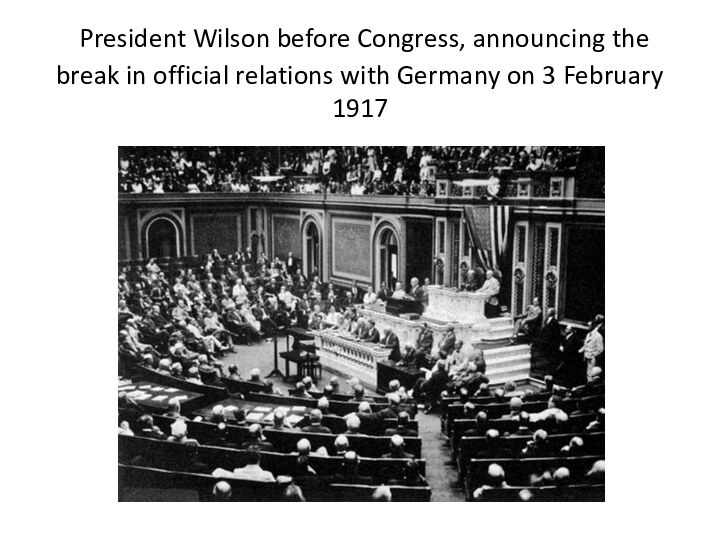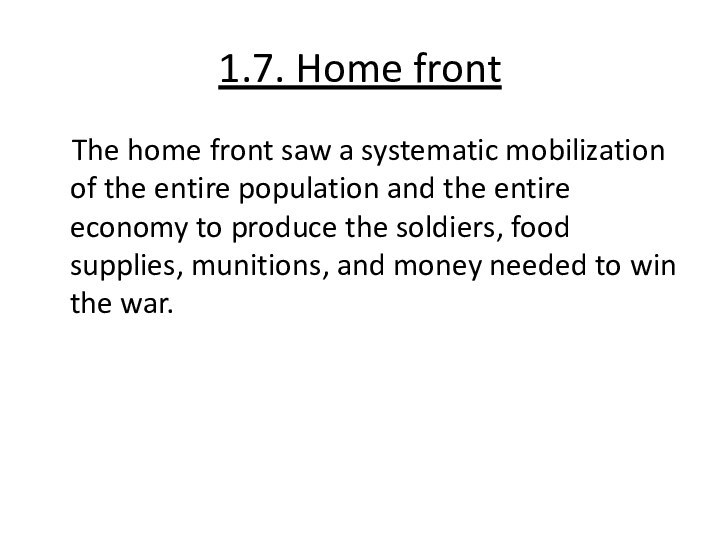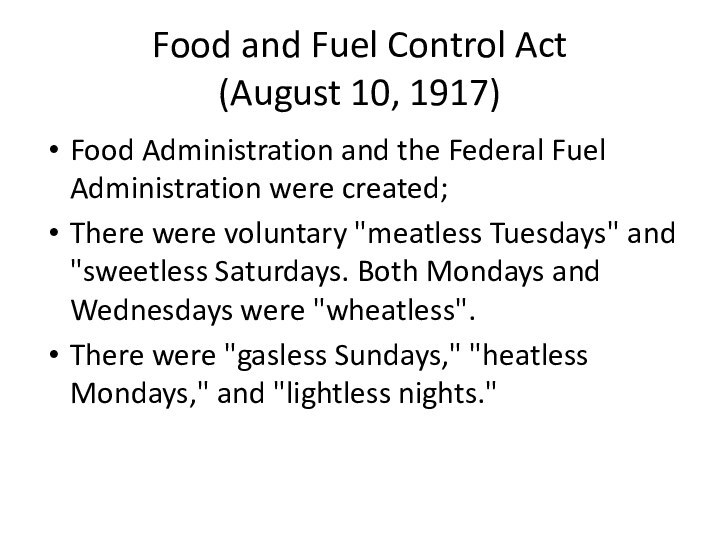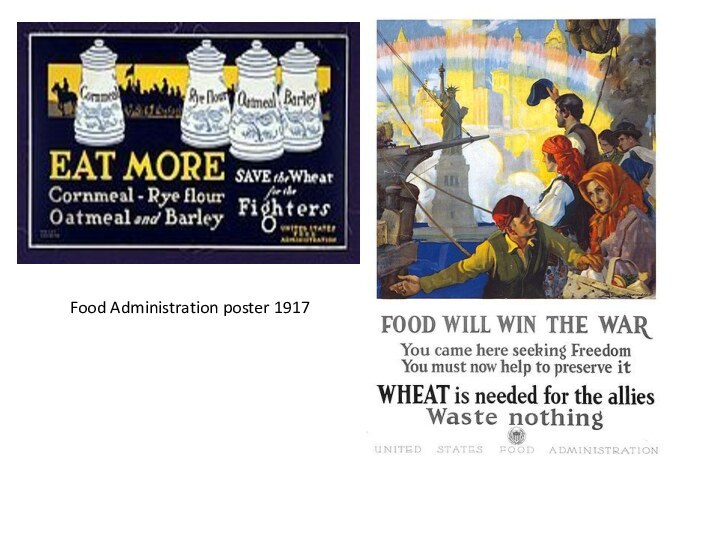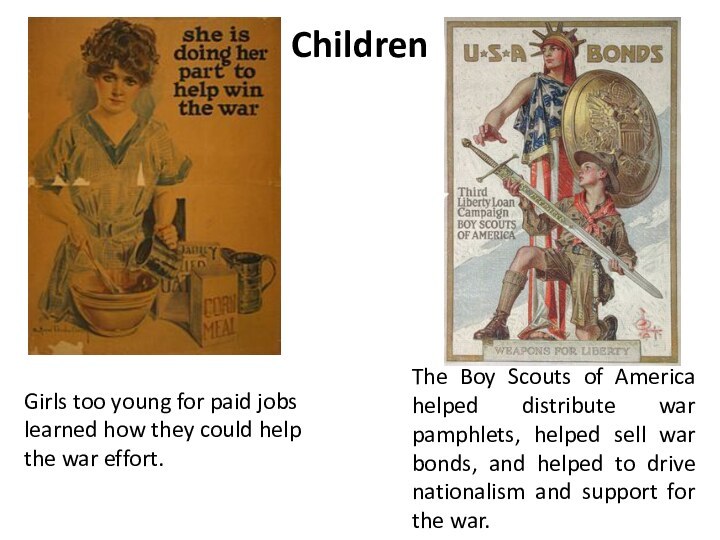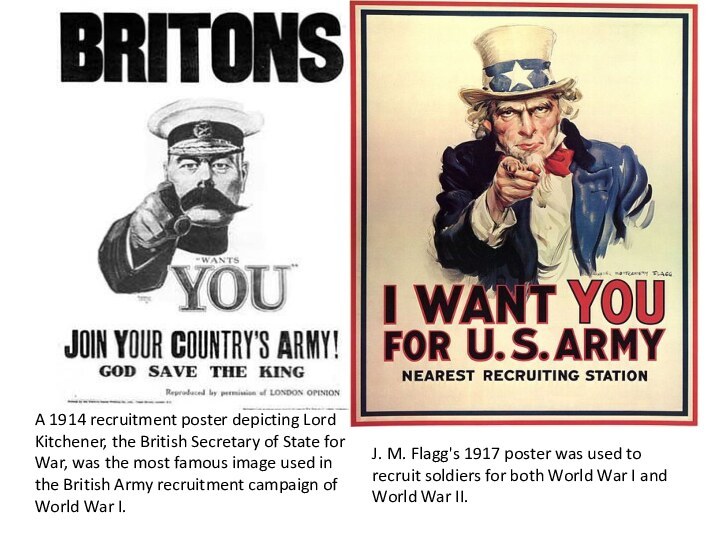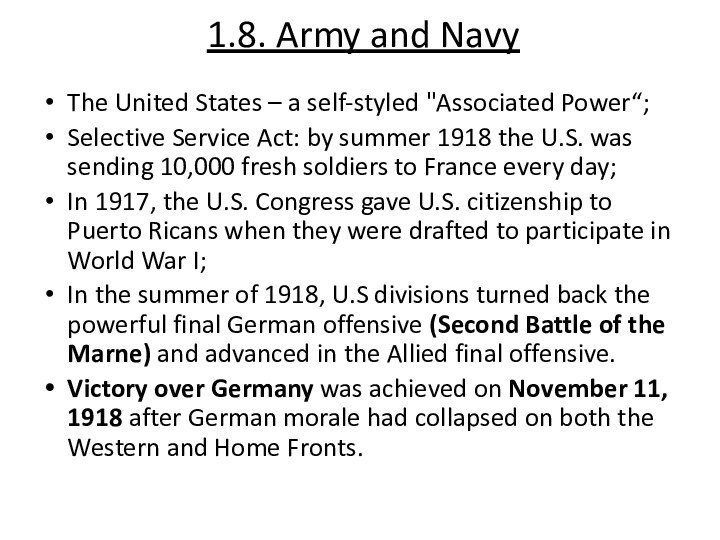Слайд 2
The USA in the 20th Century
1. America in
World War One
2. America after WWI
3. America in
World War II
4. America after WWII
Слайд 3
1. America in WWI
1.1. American Entry into WWI
The U.S. government, under Woodrow Wilson`s control,
called for NEUTRALITY “in thought and deed”;
May 7, 1915, a German submarine sunk the British liner Lusitania, killing 1198 people(128-Americans);
Wilson: "America is too proud to fight," demanded an end to attacks on passenger ships;
Wilson made all the key decisions and kept the economy on a peacetime basis, while allowing large-scale loans to Britain and France.
Слайд 4
1.2. Elites
3 groups of national elites:
1. Anti-war (“pacifists”):
wanted to keep America out of war (Secretary of
State William Jennings Bryan(a Democrat), Republican Senator Robert M. La Follette, industrialist Henry Ford);
2. “Liberal internationalists”: supported armed force to create a collective security system ( President Woodrow Wilson, former president William Howard);
3. “Atlanticists”: sought a security relationship with Britain (former president Theodore Roosevelt, Republican Senators Elihu Root & Henry Cabot Lodge)
Слайд 5
1.3. Business considerations
The beginning of World War I
in Europe coincided with the end of the Recession
of 1913-1914 in America.
Exports to belligerent nations: $824.8 million (1913) → $2.25 billion(1917).
Bethlehem Steel → the profits resulting from wartime sales expanded the company into the third largest manufacturing company in the country.
Слайд 6
1.4. Preparedness Movement
1915 – in Eastern cities a
new "Preparedness" movement (PM) emerged;
The driving forces behind Preparedness
– Republicans (General Leonard Wood, Theodore Roosevelt);
The PM argued that the United States needed to immediately build up strong naval and land forces for defensive purposes;
The PM`s "realistic" philosophy of world affairs: economic strength and military muscle are more decisive than idealistic campaigns for democracy and national self-determination.
Слайд 7
1.5. Democrats respond
The Democratic party saw the Preparedness
movement as a threat;
Neither the Army nor Navy was
in shape for war;
Wilson embraced a building program designed to make the fleet the equal of the Royal Navy by the mid-1920s;
The weakness of American military power encouraged Berlin to start its unrestricted submarine attacks in 1917.
Слайд 8
1.6. Declaration of War
In January 1917 Germany decided
to resume submarine warfare on all commercial ships headed
toward Britain, realizing it would mean war with the U.S.
The Zimmermann Telegram(16 January 1917) – diplomatic proposal from the German Empire to Mexico to make war against the United States.
Congress voted to declare war on April 6, 1917.
Слайд 9
President Wilson before Congress, announcing the break
in official relations with Germany on 3 February 1917
Слайд 10
1.7. Home front
The home front saw
a systematic mobilization of the entire population and the
entire economy to produce the soldiers, food supplies, munitions, and money needed to win the war.
Слайд 11
Food and Fuel Control Act
(August 10, 1917)
Food Administration
and the Federal Fuel Administration were created;
There were voluntary
"meatless Tuesdays" and "sweetless Saturdays. Both Mondays and Wednesdays were "wheatless".
There were "gasless Sundays," "heatless Mondays," and "lightless nights."
Слайд 12
Food Administration poster
1917
Слайд 14
Children
Girls too young for paid jobs learned how
they could help the war effort.
The Boy Scouts of
America helped distribute war pamphlets, helped sell war bonds, and helped to drive nationalism and support for the war.
Слайд 15
Propaganda
Committee on Public Information (pro-war speeches at thousands
of public gatherings);
Other forms of propaganda: newsreels, photos, large-print
posters, magazine and newspaper articles, and billboards;
Film industry produced a wide variety of propaganda films.
Слайд 16
Naval recruitment poster (1917)
Слайд 17
Navy recruiting poster by Howard Chandler Christy
Слайд 18
J. M. Flagg's 1917 poster was used to
recruit soldiers for both World War I and World
War II.
A 1914 recruitment poster depicting Lord Kitchener, the British Secretary of State for War, was the most famous image used in the British Army recruitment campaign of World War I.
